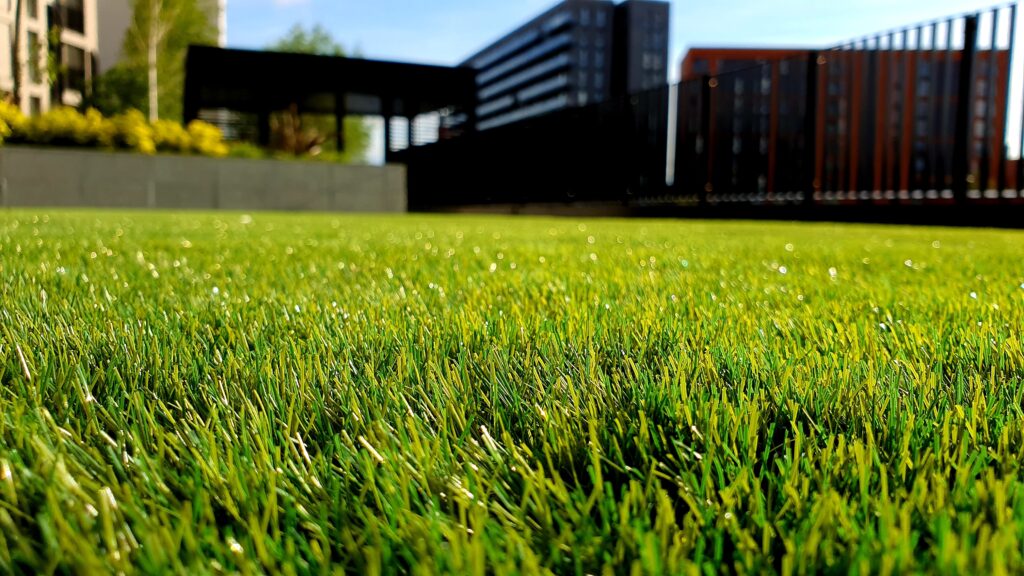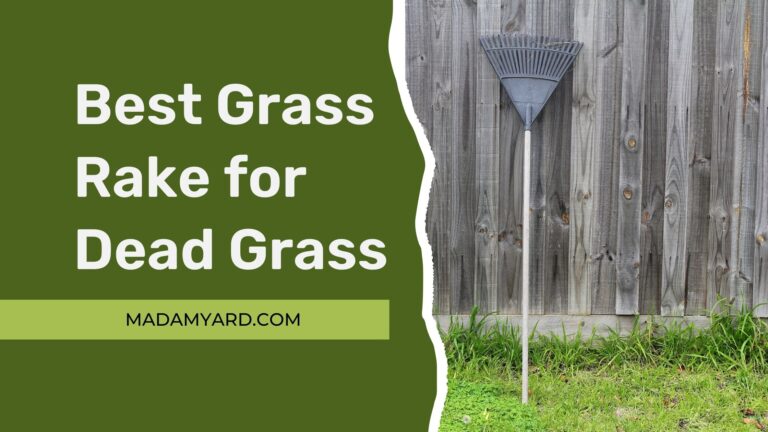How To Make Bermuda Grass Thicker?
Your Bermuda grass starting to seem a little scrawny? Is your Bermuda grass spotty now that it’s greened up in the spring? Or do you want the answer to the question of how to make Bermuda grass thicker? Why won’t my Bermuda grass grow?
Whether you’re attempting to save a dying Bermuda lawn or grow your Bermuda grass to its maximum potential, the ideas in this article will make a significant difference which will result in a fuller, healthier lawn.
Bermuda grass produces a carpet-like floor that may be seen in many yards around the United States.
Because of its drought tolerance, this grass is one of the most popular in the country. That’s only one of the numerous advantages it provides.
Follow the instructions given below to learn how to make Bermuda grass thicker if your Bermuda grass is not growing well.
I will about to give you some tips on the best way to thicken the lawn.
To begin, you must comprehend how Bermuda differs from other lawn grasses. It’s a full-sun grass that blooms in the summer.
Bermuda, like other grasses, takes some attention if you want it to grow thicker. Because this species of grass grows fast, you must learn how to properly maintain it.
You may use many lawn care techniques to grow your grass thicker, but we’ll focus on the top seven. Let’s not spend any more time; relax and enjoy this article!
How To Make Bermuda Grass Thicker?
You might be wondering how to make Bermudagrass thicker and fuller as you gaze out your window and strike it rich. This hardy grass floor can endure considerable foot activity and grows fast. Any injured regions that are adequately cared for can heal.
Bermuda grass may thrive in places where other grasses have a hard time surviving. It can survive extreme heat and drought for lengthy periods. Bermuda grass is utilized for many purposes because of these factors.
While some people use it as an easy species to cover their lawns, it is also frequently utilized on golf resorts, sports fields, and even cattle grazing. While the benefits of Bermuda grass make it a popular choice, to keep it growing thick, you’ll need to take good care of it.

Following these few easy procedures will result in a lush, brilliant green Bermuda grass lawn:
1. Regularly Mow And Keep The Mower At A Low Height
Bermuda grows faster than any other warm-season plant and requires the most nutrients. Mulching clippings rather than bagging them is frequently suggested since it can minimize fertilizer usage by up to 30%. Because of the rapid pace of development, frequent mowing is essential for success.
Bermuda grass should be cut at one to two inches high. The blade tips shadow the lower sections of the plant if it grows too high between cuts, causing them to become yellow.
Mow less than one-third of the overall height each time to avoid unattractive yellow grass. Due to its fast growth, it may be necessary to cut more than once each week under ideal growing conditions.
Continue mowing at the same height in the fall until the grass becomes dormant. Allowing fall leaves to pile up on the surface is not a good idea.
Mow and mulch them into the grass to provide organic matter to the soil, or remove them if too many. Mow a notch lower than typical in the spring when your grass is half green to eliminate old, brown leaves and make room for green growth.
2. Water Supply & Irrigation
Bermuda grass is drought tolerant. Nevertheless, watering it once a week will enable the grassroots to penetrate deep enough to stay green even under dry and hot weather conditions.
Instead of watering it multiple times a week for short periods, it is preferable to water the Bermuda grass once a week for three to five hours.
You’ll also be able to add one inch of water, which you may measure by placing an empty jar on the grass.
The water then seeps deep into the earth, assisting the roots in digging more profound rather than forming a shallow foundation.
3. Dethatch During The Growth Season
If done during the active growing season and only when the thatch is more than 1/2-inch thick, dethatching a Bermuda grass lawn can be beneficial. When you dethatch Bermuda grass dormant, you risk killing the lawn or leaving it thin and sparse.
While over-seeding a Bermuda grass lawn is best done in September or October, you can apply it as soon as the grass emerges from dormancy in the spring. It will assist in filling the barren and thin places left over after previous dethatching.
4. Aerate Your Lawn
Aerating your lawn once a year in early summer allows the grass to absorb nutrients and moisture without becoming suffocated by a heavy layer of thatch. The finest aerators are core aerators, rented from most garden supply or home improvement stores.
These devices roll over your grass and remove 1-inch diameter dirt plugs. It allows the roots to develop more freely.
In addition, it prevents the soil from getting too compacted, preventing moisture from reaching the roots.
Each square foot of lawn should have around 12 plugs removed, so you’ll probably need to use the aerator twice. For comprehensive coverage, the second series of passes should be at a 90-degree angle to the first.
5. Take Care Of Your Weeds
Thicker grass inhibits weed development, but invasive weeds can make it appear as though your lawn is not thickening. It’s time to get rid of those weeds if your Bermuda grass is littered with unwelcome plants.
Dig out weeds by hand for optimum results, or apply one of the best weed killers for Bermudagrass, such as a 2,4 D Amine, which will kill weeds while leaving Bermuda grass undamaged.
6. Lawn Fertilization
Bermuda grass thrives in soil with a pH range of 5.8 to 7.5. Every year, it consumes roughly 4 pounds of nitrogen per thousand square feet. However, because each grass is unique and has varying innate fertility, even the most general guidelines might be incorrect.
Fertilizer treatments should be based on a soil test to create a healthy, dark green lawn. Send a soil sample to the Cooperative Extension Service in your area.
You will receive test results in four to six weeks. The result was detailing the current pH, nutrient levels, and organic content of your lawn, as well as recommendations for fertilizer treatments and other soil amendments. Annual soil testing is recommended for optimum results.
7. Shade Reduction
Bermuda grass will seem sparse and uneven if it is planted in a shady location. Ensure that the grass area is not entirely restricted from sunlight access while sodding or sowing your lawn.
Because Bermuda grass has a low tolerance for shadow, it needs at least 7 hours of sunshine every day to grow bigger and greener. Here are some suggestions for increasing your lawn’s exposure to sunlight:
- Trim trees in your yard to lower the canopy over your grass and allow more sunshine to penetrate.
- Choose a location for your lawn that is not shaded by tall structures. Allow at least 7 hours of morning sunshine to reach the grass.
- If your grass is tiny, place a sunlight reflector in the yard to extend the amount of time it receives sunshine.
How Do I Fix Bermuda Grass Patchy?
With Bermuda grass’s fast growth rate, you should have no trouble getting it to fill in any uneven areas, provided you keep it mowed, watered, and weeded regularly. If you’re experiencing difficulty with spotty regions, though, there are a few things you can do:
1. Sodding The Area
If you want to rapidly fill in a bald spot of earth, you can do it by cutting a portion of sod and putting it over the area. You’ll need to prepare the soil first, then remember to water.
2. Seeding The Area To Repair It
You may also fix the area by removing the patchy region with a shovel. Add dirt to the area you removed to maintain its level with the rest of your lawn.
Apply a thin layer of grass seeds to the soil and rake them in gently. Cover with straw to minimize moisture loss and keep birds away from your seeds.
Making Bermuda Grass Greener
The majority of Bermuda grass lawns are light green. Thus any yellowing might indicate a problem. You’ll get a lush green, thick lawn that feels like a carpet under your feet if you stick to a regular Bermuda grass maintenance schedule.
There are some things you may do to restore the green color of your lawn if it seems to be unhealthy. To make Bermuda grass greener, follow these steps:
1. Take Iron Supplements
In the development of Bermuda grass, iron is a necessary nutrient. In grass, iron assists in the synthesis of chlorophyll. The ingredient that gives Bermuda turf its rich green hue is chlorophyll.
Iron supplementation of Bermuda grass may give the lawn a vital nutrient that it may be lacking. A soil test is advised if the lawn is suspected of having a pH or nutrient deficit.
2. Use Nitrogen To Fertilize
Nitrogen is an essential nutrient that aids in the regulation of water and nutrient absorption. Nitrogen deficiency not only makes the lawn thin and undeveloped but also causes it to lose its color.
- Use 1 pound of nitrogen per 1000 square feet of lawn to ensure the grass grow thicker and greener
- Feed your grass with an organic slow-release fertilizer weekly to help it thicken and green up throughout the growing season.
What Fertilizer To Use To Thicken Grass?
Bermuda grass is one of the most appealing turf kinds, but only if it is well maintained. Mowing, thatch removal, aerification, weed, and pest control are part of the Bermuda grass annual care routine.
Following regular watering, proper fertilization is the next most critical aspect of Bermuda grass maintenance. If you want your Bermuda grass to be lush, green, and thick, you’ll need to fertilize it properly.
But don’t simply use any fertilizer on the Bermuda grass. Bermuda grass grows best on soil with a pH of 6-6.5.
The first step is to test the lawn soil to see whether there are any nutrient shortages. It will assist you in selecting the proper Bermuda grass fertilizer for your lawn.
The best fertilizer to use based on the season
January To April
Refrain from applying nitrogen fertilizer until the grass has become green. There are no more expected frosts at this time of year. The grass can be damaged by fertilizer-induced growth followed by a late frost.
When it’s safe to fertilize, use half a pound to one pound of real nitrogen per 1000 square feet, based on soil type.
You can add fertilizers, sulfur, or lime as needed if you’ve done a soil test. Lime will increase the pH of the soil if it is too acidic. Sulfur will lower the pH if it is too alkaline.
To improve the green color of the grass, use a soluble iron treatment. When the weather is between 60 and 70 degrees Fahrenheit, this should be done in the spring.
From May To August
Apply half a pound to a pound of original nitrogen per 1000 square feet in early May, presuming the grass didn’t turn green early enough to fertilize earlier. Determine how much phosphorus, if any, will be required using a soil test.
You’ll add another half-pound to a pound of original nitrogen per 1000 square feet in June or July. This time, choose a potassium-rich fertilizer. A soil test will once again indicate the amount of phosphorus required.
Apply another round of half a pound to a pound of original nitrogen per 1000 square feet in August with a potassium-rich fertilizer. Before the grass becomes dormant, make sure there’s enough potassium in the soil. It will help with disease and cold-weather resilience.
Your Bermuda Grass should get between 2 and 4 pounds of real nitrogen per 1000 square feet during the growing season. The grasses that thrive on sandy soils will have larger numbers of nutrients.
September To December
Because your grass isn’t growing right now, no nitrogen or phosphorus should be applied.
Potassium should be applied four to six weeks before the first expected frost at a rate of one pound per 1000 square feet. To regulate the pH level of your grass, you can use either lime or sulfur.
Final Thought – How to Make Bermuda Grass Thicker
After reading the preceding post, we hope you have a better grasp of how to make Bermuda grass thicker and better than before.
Bermuda grass thins for many reasons, including a lack of topsoil that makes it difficult for water, nutrients, and air to reach the grass’s roots, insufficient fertilizers, insufficient watering, and so on.
Maintaining your lawn and keeping your Bermuda grass dark green and thicker, on the other hand, is not a difficult task. All you need are a few basic gardening supplies to get started.
A well-kept lawn with Bermuda grass that has been carefully trimmed may improve the appearance of your home. You can guarantee that your lawn looks beautiful with the aid of this easy equipment and procedures.







